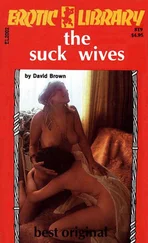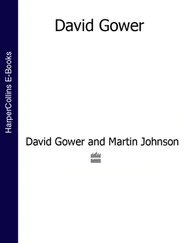Miles Richardson, one of the DSF's founders, is a very political man, having been president of the Haida Nation for twelve years before being appointed chief treaty commissioner for B.C. to encourage progress on treaties between Canada, B.C., and First Nations. Miles is a big man, literally and figuratively, with a formidable intellect, a huge zest for life, and a relish for facing its most difficult problems. He likes to remind us that as human beings we possess foibles, idiosyncrasies, weaknesses, and beauty. He more than anyone has tried to teach me to revel in the here and now and take pleasure in what I am doing in the moment.
When, in 1998, an opportunity arose for the DSF to work on coastal issues in B.C., Miles urged us to look at forming relationships with local First Nations communities so that we could work together and find ways of protecting forests and fish while creating sustainable ways to make a living. With chronic levels of unemployment in Native communities reaching well above 50 percent, even those who have taught us much of what we know about Mother Nature become so deprived of employment and income that they must accept the sacrifice of much of their surroundings. Having cleared the readily accessible trees in the south and around Prince Rupert, forest companies now coveted the rich forests of remote communities in the central and north coast and Haida Gwaii.
In the winter of 1997–98, Jim Fulton asked Tara to step into a staff position. He knew she was the only person who could be the foundation's “diplomat” and establish relationships with the eleven small First Nations communities within the temperate rain forest of the central and north coast and Haida Gwaii. The territory of these communities represented a quarter of all the remaining old-growth temperate rain forest in the world. He believed the best and right way to protect the forests and fish was to work with First Nations to help realize their sovereignty over the territory. Tara and I didn't have the vision Jim and Miles did, and we couldn't clearly understand how the nations would unite, but Tara subordinated her misgivings and began to travel alone into each community to meet the leaders, elders, and families in the villages.
Long before these first forays, Tara (and our family) had already established deep friendships in two of these villages, Skidegate and Bella Bella, as well as Alert Bay and others to the south. We had been adopted by two families and had long felt a responsibility to make a contribution to their villages.
In many First Nations communities, a schism has been created between traditional chiefs, who inherit their position, and the chiefs and band councils elected under rules imposed by the Department of Indian Affairs. We were well aware the traditional chiefs would be supportive, whereas elected councils had to prioritize jobs and development. But we didn't want to exacerbate community division, so we decided to go through the “front door”—the elected councils — hoping to meet the traditional chiefs and elders later with each council's blessing. We wanted to be completely open and forthright in our dealings with each community. In the past, environmentalists had enlisted the support of individual band members to fight to protect certain areas, but when the battle was over, the Native people sometimes had to deal with debt and ill will left behind. Many band councils were understandably suspicious of our motives.
Tara visited these remote villages to explain what the David Suzuki Foundation was and to explore partnerships in areas of common interest. We made no secret that our concern was the conservation of the old-growth forests, but we also acknowledged First Nations sovereignty over them and our willingness to work with First Nations to gain recognition of their rights. We hoped our science, fund-raising activities, and contacts might be useful.
In general Tara was made welcome and treated with respect, but she was sometimes berated by the councils. Once, when she had returned from a trip and I was quizzing her about the experience, she burst into tears as she recalled the loneliness, the pressures, and the humiliation. One band council member had chastised her: “Greenpeace and all you goddamned environmentalists. .” Many First Nations are understandably wary, having watched a succession of do-gooders like us too often abandon them with promises unfulfilled.
Many of the communities situated in the rain forest in the mid- to north coast of British Columbia are extremely isolated, some reachable only by boat or floatplane. Often they suffer from chronic high unemployment and thus are vulnerable. To secure a small medical center and the promise of a handful of jobs, a community may have to sign agreements that will allow a company to liquidate their forests in a matter of years. One of the most pernicious practices Tara observed in the late '90s was what government and company employees called “consultation.” Forced by the courts to consult First Nations, a company representative would fly into a community, call or bump into a few people and chat about their families, health, and local gossip, then call that a consultation.
Visiting the villages makes one re-examine concepts of wealth and poverty. I once visited a remote village of some two hundred people. When my plane landed, dozens met me at the dock. That night my hosts put on a feast in my honor. Tables sagged under platters piled with salmon, crab, halibut, herring roe, bannock, moose meat, eulachon, clam fritters, dried seaweed, and desserts. After dinner, the head of the band council opened the speeches by saying the band was poor and required money to buy things the people needed; that was why they had allowed logging in their territory.
When it was my turn to speak, I pointed out that in my affluent neighborhood of Vancouver, where there were probably three times as many people in one block as there were in that village, after twenty-five years I knew fewer than twenty of my neighbors by name. There was a park half a block away in which I didn't allow my children to play alone. Our home and car had been broken into several times. Even with thousands of dollars, I said, I could never have bought a feast like the one they had prepared for me. They were rich in what we had lost — community, land, and resources.
Yet Canadians have no right to tell First Nations they should live in some romanticized version of a museum-like state, frozen in time. These are twenty-first-century people who need boats and motors, computers and plane tickets. Can they protect their traditional values and their surroundings while finding ways to sustainably generate income for the things they need, in a manner acceptable to them? The decisions are theirs.
Although conservation was a serious issue to all the villages, jobs — community economic development (CED) — were the first priority. We accepted this challenge and set about turning ourselves into a CED organization, opening a DSF office in Prince Rupert and hiring Jim MacArthur, and then Sandy Storm, to run it.
AFTER EXTENSIVE RESEARCH for a CED model, we learned of a program called Participatory Action Research (PAR) that we thought might be of interest to the First Nations on the coast. For more than half a century, the program has been used successfully by peoples as diverse as Inuit in the Arctic and Sami in Russia.
PAR is based on a bottom-up philosophy whereby the knowledge, expertise, traditions, and skills within the community form the basis of its economic development. One of the first steps in the process is to hold community workshops to determine what people see as the community's strengths and what they want the community to be a decade or two later. Next, projects are identified and priorities developed. Soon, traditional mapping is used to determine how new jobs can be built from old. The PAR approach identifies a job here, another there, until collectively they add up to a significant number and help to keep the money circulating within the community. A par-trained worker is sent to live for up to three years in the community that is seeking a strategy for economic development. He or she gets to know the people, identifies their skills, abilities, and needs, then works with them to find opportunities and solutions until the adviser is no longer needed.
Читать дальше


![David Jagusson - Devot & Anal [Hardcore BDSM]](/books/485905/david-jagusson-devot-anal-hardcore-bdsm-thumb.webp)









